We tested 9 superbikes to crown our race bike of the year
Cannondale, Canyon, Cervélo, Giant, Scott, Trek (and more!) battle it out


The dust has now settled, the bell-lap completed, and after many months of testing and hours of discussion, the results are in for Cycling Weekly’s 2023 Race Bike of the Year award – but we won’t be giving them away quite so quickly.
First, let’s back up to the criteria for entry. Our first stipulation for Race Bike of the Year was that each model must be among the 2023 WorldTour bikes. Vitus, for instance, produces some excellent bikes – and at particularly keen price points – but none of its models met our first criterion.
Second, where a brand produces multiple models that are raced at WorldTour level (Trek has no fewer than three, for example) we’ve chosen the platform we find most notable. This has seen us include the new Giant Propel over the venerable TCR, for example, and the new Cannondale SuperSix over the similarly ‘mature’ SystemSix.
Which brings us neatly on to the topic of bike design, or rather the dichotomy between aero bikes and climbers’ bikes. Over recent years, aero bikes as a category have seen some huge shifts in their remit. The tropes of aero bikes being anchors on the hills and shopping trolleys on anything but the smoothest tarmac are long gone. The latest crop of the best aero bikes have haemorrhaged excess weight and boosted comfort levels – all bikes on test can be built to the UCI weight limit and can fit 28mm tyres as a minimum, some going up to as much as 34mm.
Convergent design
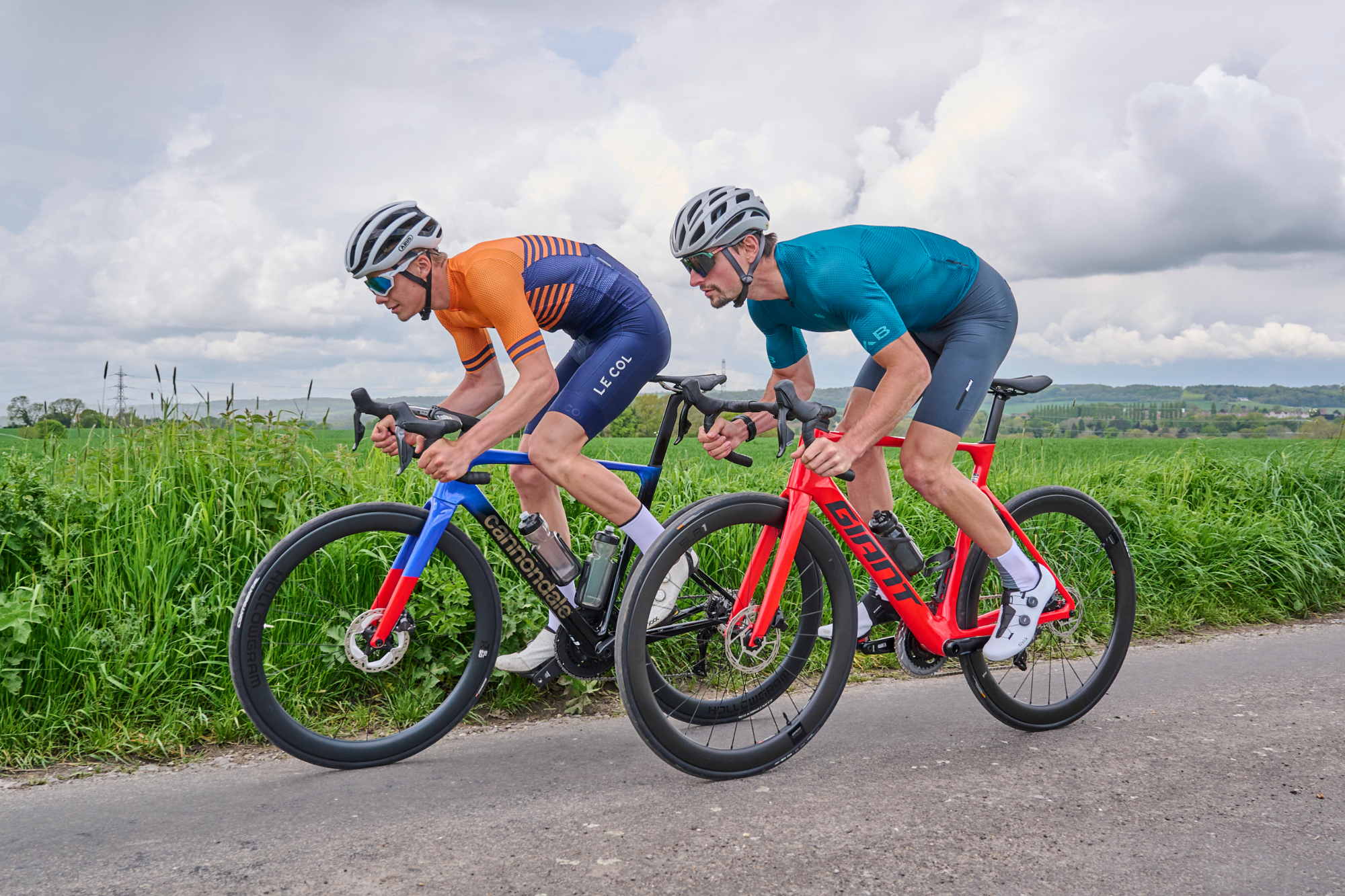
Likewise, climbers’ bikes haven’t missed the march of progress. Naturally, weight is still a prime concern, as is vibration dampening comfort enhancement and geometries designed to see riders down the mountains as well as up. But alongside that, many of the learnings from aero bikes are being applied – thicker, kammtail tubes, dropped seat stays, hidden cables and more are all now appearing on these lighter weight models.
Muddying the waters further are aero bikes which have eschewed the orthodoxy of ‘big tubes equals fast’ and are seeing (reported) aero gains with skinnier frames – and reaping the benefits of a lower weight and better compliance as a result. The Giant Propel, Colnago V4RS and Wilier Filante are all aero bike platforms, but their profiles don’t look much different to the climbers’ bikes of the Cannondale SuperSix and the BMC Teammachine. With that in mind, we’ve held the door open to both aero and lightweight models in our Race Bike of the Year grouptest. But, noting the sizable differences between models at either end of that spectrum, we are also giving awards for the Best Aero Bike and Best Climbers’ Bike on test – in addition to awards for the Best Value Bike and our overall Race Bike of the Year winner.
With one eye on price, we called in bikes with second-tier groupsets, safe in the knowledge that they all perform as well as the range-toppers. Due to availability, some bikes were supplied with range-topping groupsets, but have not been marked up because of this.
Cycling Weekly's Race Bike of the Year 2023
Wilier Filante SLR
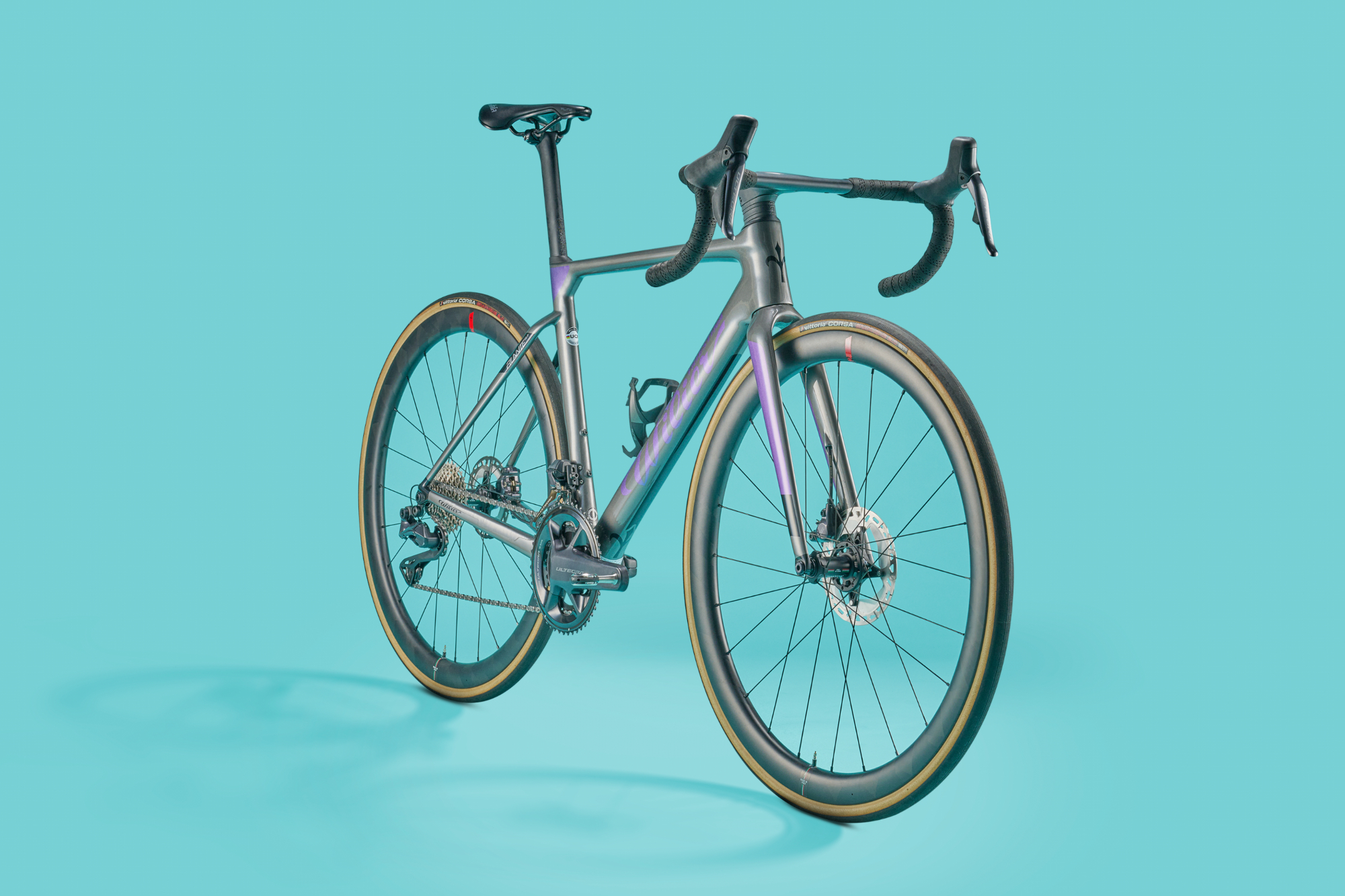
Wilier can sometimes end up flying a little under the radar, which is a keen loss for anyone who overlooks the Italian marque as, despite its 117-year heritage, Wilier still remains at the cutting edge
Released in 2021, the Wilier Filante SLR was actually among the first instances of this current wave of ‘lightweight aero’ bikes. In the last 12 months, Giant and Colnago have both followed suit with the Propel and V4RS respectively, with each boasting aero gains without butting up against the UCI’s 3:1 rule – and saving a handy amount of weight in the process.
It’s hard not to fall in love with the Filante SLR. It dances up the climbs, accelerating and propelling you indistinguishably from some wholly specific climbing bikes. But where those models then become a bit of a drag on the flat, twisting the screw a little when it’s your time on the front, the Filante SLR cuts through the air and holds its speed.
More so than almost any other bike on test, the Filante SLR finds itself in contention for (almost) every category we have: Best Climbers’ bike, Best Aero Bike, Dream Bike, Race Bike of the Year – the one exception is the ‘Best Value’ category, which the Filante heroically concedes.
Unfortunately for a jack of all trades, the Filante SLR remains a master of none. In the climbing and aero categories, it’s edged out in both by models with a bit more specificity. The Filante’s balance between handling comfort, aero and weight – although excellent in its own peppy way – is nevertheless not quite up there with the more tech-heavy Cervélo S5.
Whether or not the Wilier Filante SLR should have taken the spot for ‘Dream Bike’ is harder to judge – no doubt there will be those who wholly disagree with our verdict. But, hopefully, even if you reject our conclusion, there will be something in the argument you can appreciate – read on for that.
All that’s to say that the Filante SLR – as with all the models here – is an exceptionally good bike. Only the very best performers in all our reviews were put forward for consideration here. But, with nine bikes and only five categories, some will come away with nothing more.
- Price range: £9,710 - £13,300
- Model tested: £9,710
- Weight: 7.38kg
- Rim depth (wheels): 42mm Wilier Triestina SLR42KC
- Internal rim width: 21mm
- Tyre width (model): 28mm Vittoria Corsa
- Groupset: Shimano Ultegra
- Saddle: Selle Italia Flite Boost
Canyon Aeroad CF SLX 8

The current Canyon Aeroad is one of the more ‘established’ models on test but despite the advances of its rivals, it still feels palpably fast.
The Aeroad packs in a suite of lovely touches. The stack height can be adjusted without cutting the steerer, the seatpost provides a substantial amount of vibration dampening flex, and the handlebar width can even be adjusted.
However, the narrowest the bars can be set is 39cm, which isn’t supernarrow for the middle sizes and is quite wide for the smallest when compared with rival machines.
Also, those DT Swiss wheels do come with the narrowest internal rim width out of all bikes on test, making the 25mm GP5000 front tyre visibly thinner than those of the Cannondale SuperSix (also 25mm). The result is a chattery front end which bleeds speed on coarser tarmac.
The Aeroad is still a great bike and is extremely fast on the flat. It could do with shedding a bit of weight, upgrading the handlebars and bringing the wheel and tyre choice a little more up-to-date.
Out of all the top-end models, it is also the cheapest, being the only one to still come in at just four figures.
- Price range: $4,999 - $9,499 / £3,849 - £9,999
- Model tested: $6,499 / £6,199
- Weight: 7.53kg
- Rim depth (wheels): 62mm DT Swiss ARC 1400 Dicut
- Internal rim width: 20mm
- Tyre width (model): 25/28mm Conti GP5000
- Groupset: Shimano Ultegra
- Saddle: Selle Italia SLR Boost Superflow S manganese
Trek Madone
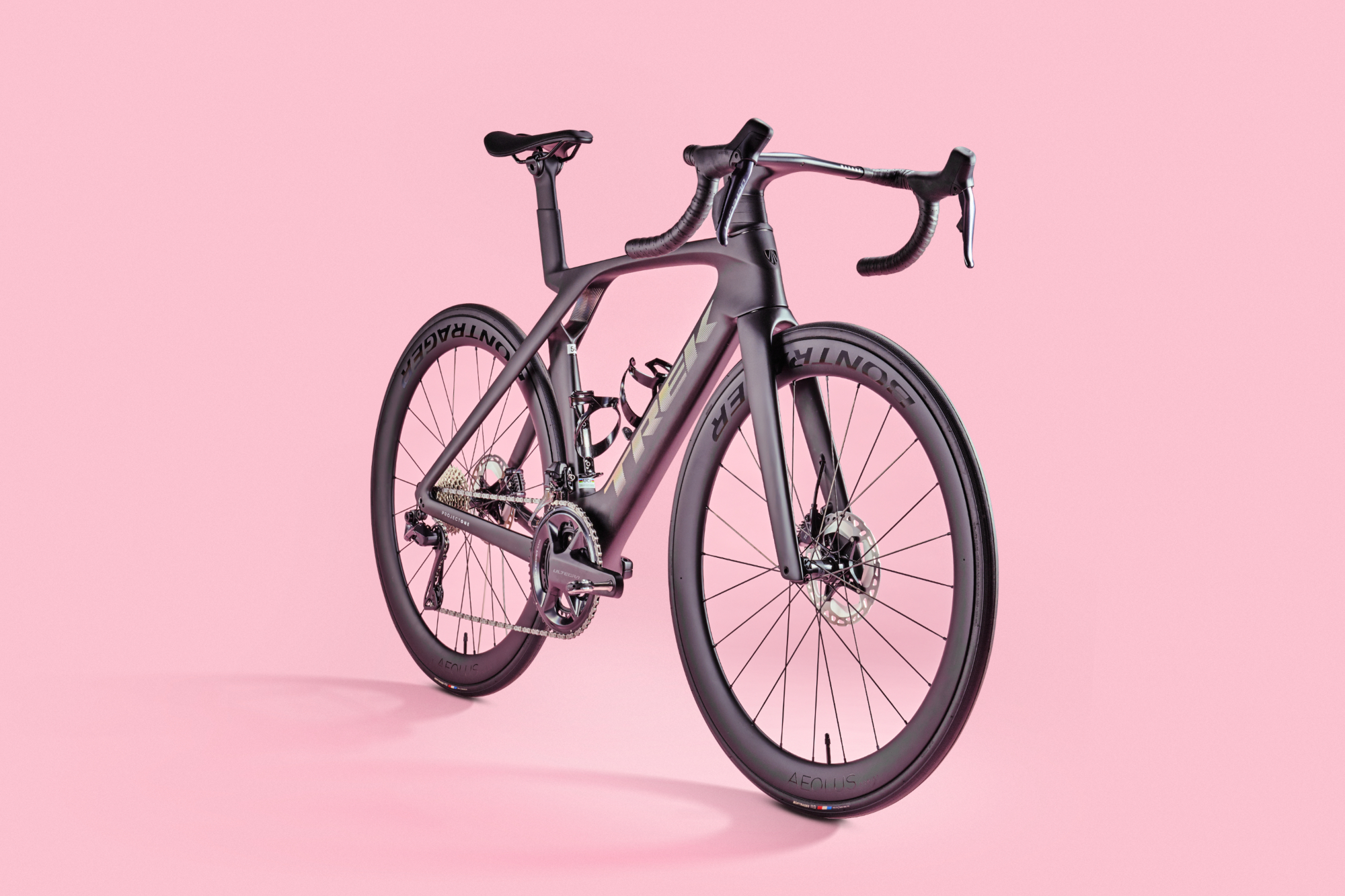
The Trek Madone received a major update last year, addressing the main criticisms of the previous iteration. First, it’s gone on a crash diet, shedding 300g through ditching the Iso-Speed vibration dampening system. Second, that seat-tube hole was added to help preserve the ride quality. And finally, a combination of new tube shapes and handlebar is said to save about 60 seconds over an hour’s ride, whether you’re travelling at 45kph or 25kph.
Does the seat-tube hole really make a difference to the comfort? Well, it does ride more smoothly than that wedge of a seatpost would suggest, but not as smoothly as other models that have built in flex to the seatpost itself, such as the Aeroad and the Foil.
It’s the handling that offers the greatest surprise. It really is incredibly fast, responding to the smallest shift in weight and the tiniest tweaks of the bars. There is variation between the other bikes on test – some handle a bit faster, others a bit slower – but the Madone stands very far apart from any of them. Some riders may appreciate this, but others might prefer a model which feels more controlled; you can get closer to your limit if you’re confident you won’t slip past.
On the other hand, the Madone was an absolute speed weapon. Those 51mm deep Bontrager Aeolus Pro wheels and the deep-section frame likely had something to do with it, but the most significant factor was the newly designed handlebar, which is the narrowest by quite a margin of all those we had on test and provided good wrist support for hunkering down into the ‘aero-hoods’ position.
It’s a shame the top-end and entry-level models are the third most expensive on test, in their respective categories. The Madone is a great bike, then, for those who can afford it.
- Price range: $8,000 - $13,200 / £7,600 - £14,500
- Model tested: $9,050 / £10,200
- Weight: 7.5kg
- Rim depth (wheels): 51mm Bontrager Aeolus Pro 51
- Internal rim width: 23mm
- Tyre width (model): 25mm Bontrager R3 Hard-case
- Groupset: Shimano Ultegra
- Saddle: Bontrager Aeolus Elite
Colnago V4RS
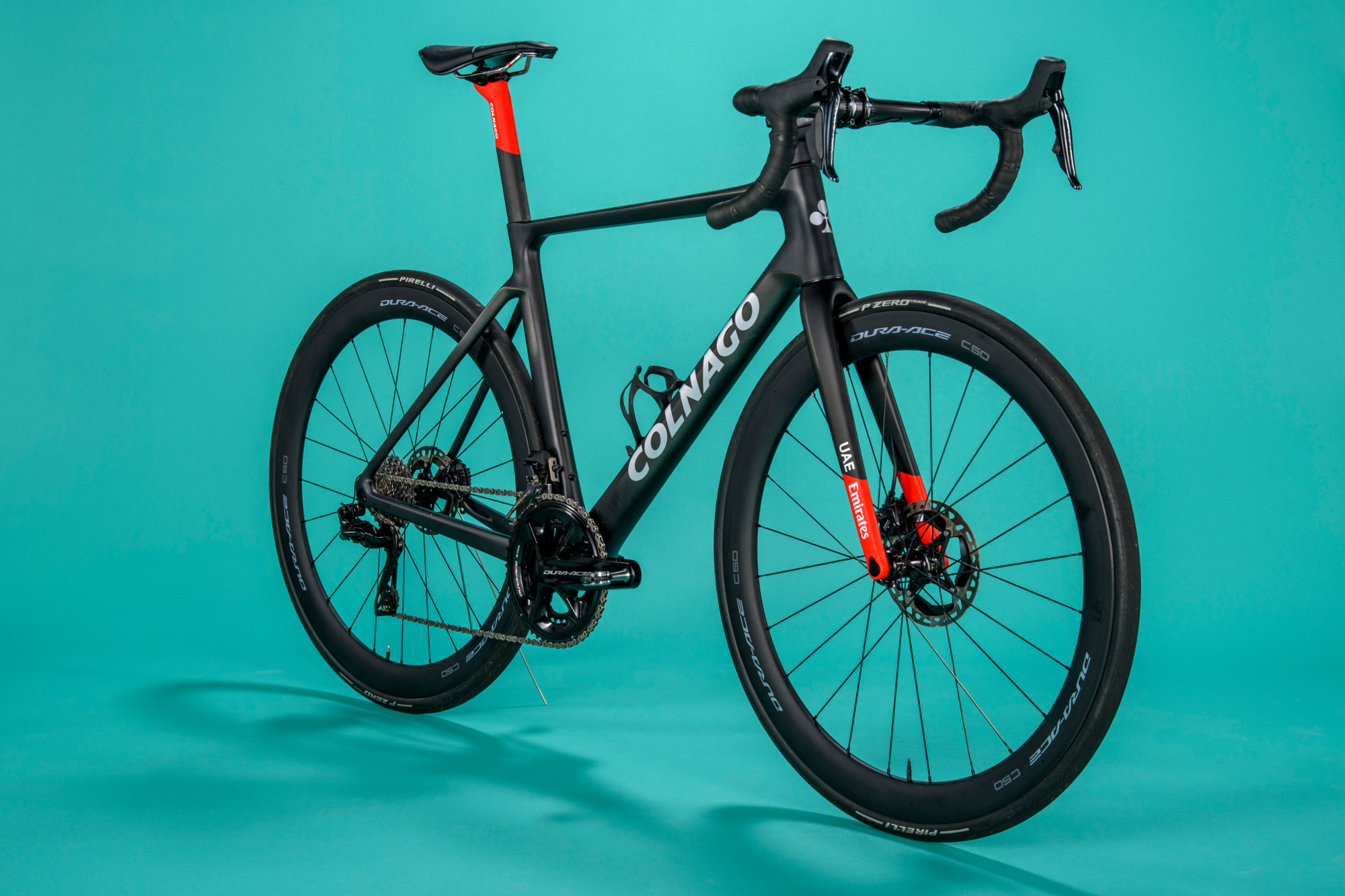
For a brand steeped in so much heritage and tradition, the Colnago V4RS was developed in quite an unusual way.
Five different prototypes were produced and given to the UAE Emirates team – their favourite being the version which saw final production. The result clearly seems to be working for Tadej Pogačar, given his wins at Paris-Nice, Tour of Flanders, Amstel Gold and Flèche Wallonne.
And the V4RS is a pure joy to ride. It’s fast off the mark and holds its speed very well on rougher roads and lanes, thanks in no small part to the 50mm-deep wheels wrapped in 28c Pirelli P Zero tyres. Point it skywards and you immediately reap the gains of the stiff frame and low weight. But it’s long, snaking climbs with gradients of around 5% where the V4RS is wholly in its element.
That said, it doesn’t have the necessary specificity in relation to its weight-shedding or aero qualities for it to win our Best Climbers’ Bike or Best Aero Bike categories. Instead, it offers an excellent balance between the two. It’s a strong contender for overall Race Bike of the Year, but its bent towards lightweight over aero, and those Shimano wheels, costs it the top spot there.
Finally, the price. The top-end V4RS is one of the more expensive models, but that’s only because a few brands have all chosen £12,500 as their cap. The V4RS comes in at £12,599 but whereas most other brands offer their frames in a lower spec and a heavier layup, there isn’t an ‘entry-level’ version of the V4RS, putting it far out of reach for most.
- Price range: £N/A - £12,599
- Model tested: £12,599
- Weight: 7.15kg
- Rim depth (wheels): 50mm Shimano Dura-Ace
- Internal rim width: 21mm
- Tyre width (model): 28mm Pirelli P Zero Race
- Groupset: Shimano Dura-Ace
- Saddle: Prologo Scratch M5 CPC
BMC Teammachine
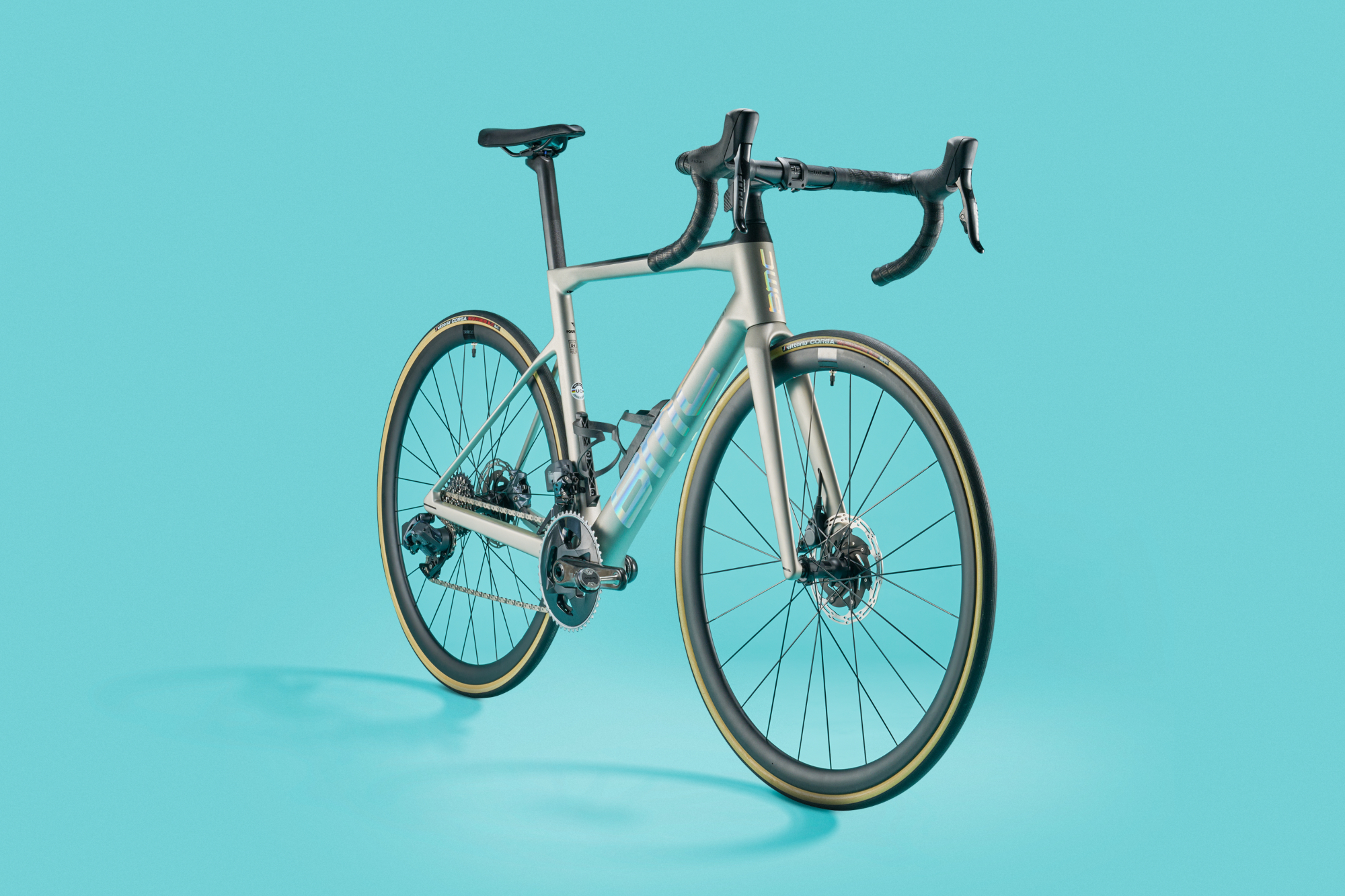
The BMC Teammachine has long been the Swiss brand’s lightweight platform but with every refresh, it gets ever more aero – the boxy, angular shapes are almost in line with the latest aero models from Giant, Wilier and Colnago.
As a result, it has snappy acceleration and excellent handling – it feels as composed when climbing or descending but also holds its speed admirably well on the flats. The tyres are Vittoria Corsas, like those specced on the Cervélo S5, but the Teammachine plumps for the 25mm option and pairs them with ‘old-school’ rims, with a narrower internal rim width.
The result is that the profile isn’t as rounded and the tyres’ shoulders are a little steeper. This leads to a little less confidence in the corners when banked over, and a little less comfort.
Two huge plus points for the BMC are, firstly, that you’re not tied to using a proprietary stem and one-piece handlebar if you don’t wish to. And, secondly, that the entry-level build of the Teammachine is the second cheapest out of all the models on test.
However, as great as the Teammachine is, it gets edged out by the Cannondale SuperSix in the Climbers’ category, by the Giant Propel for Value and by the Cervélo S5 for the overall title – but that is very much a reflection on the competitiveness of the field than the Teammachine’s own performance.
- Price range: $3,200 - $16,000 / £3,100 - £15,000
- Model tested: $8,000 / £7,600
- Weight: 7.5kg
- Rim depth (wheels): 35mm CRD-351 SL
- Internal rim width: 17mm
- Tyre width (model): 25mm Vittoria Corsa
- Groupset: SRAM Force
- Saddle: Fizik Argo Vento R5
Scott Foil
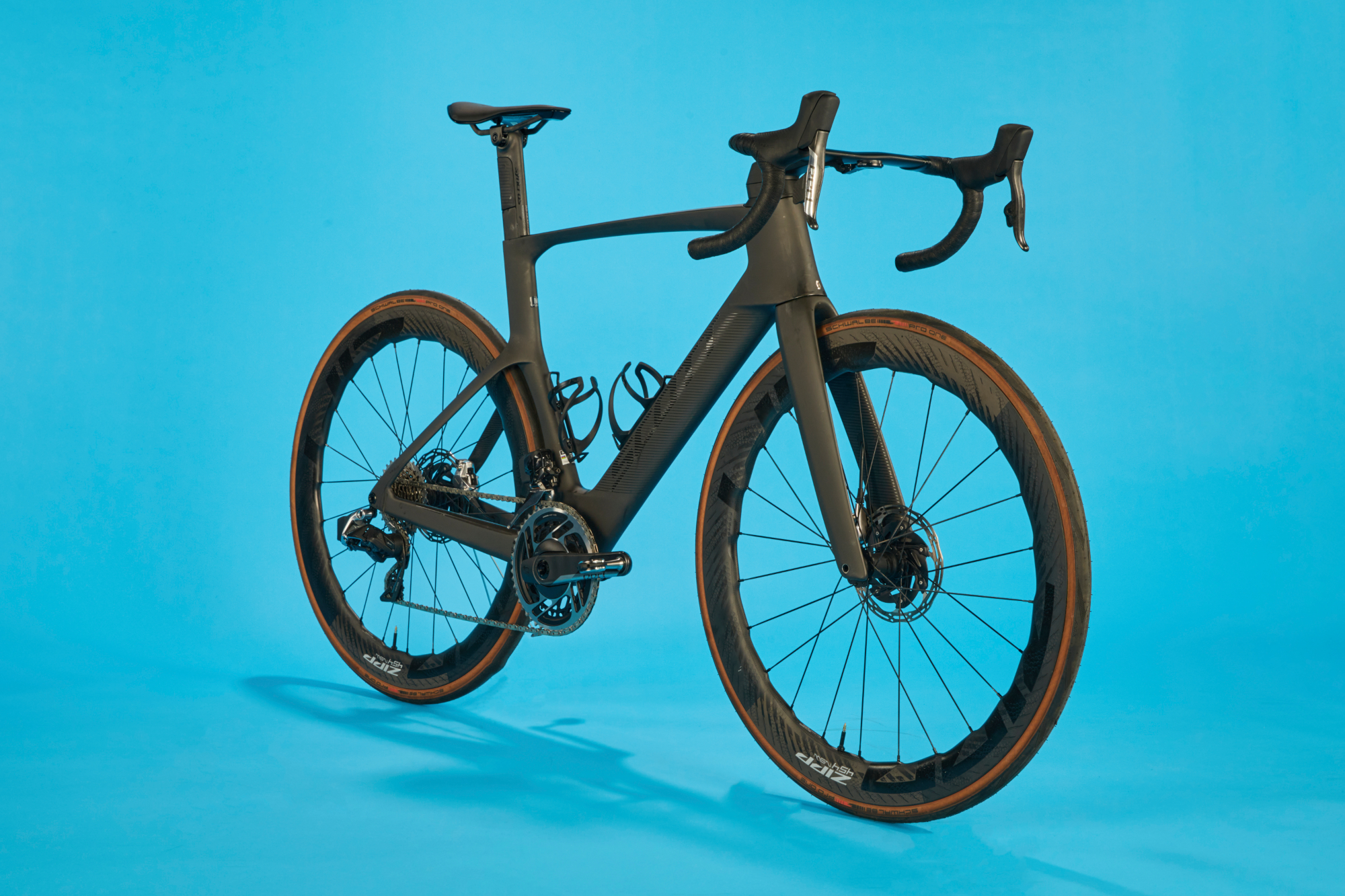
The Scott Foil received a complete overhaul last year and what has been achieved is highly impressive. The frame is significantly lighter than the tube depths would suggest, its straight line speed is blisteringly fast, and the seatpost has been redesigned to allow much greater flex.
The wheel and tyre combo adds yet more speed. We’ve tested the Zipp 454 NSW and Schwalbe Pro One tyres independently, and they are both top performers. The Zipps combine aerodynamics with a low weight, helping on the hills as well as the flats. The generous internal rim width really plumps out the tyres, too, getting the most from the Schwalbes.
The frame, handlebars and body position similarly combine for a super-fast ride. Were it not for the Trek Madone, the Scott Foil would have been perhaps the strongest contender for the crown of best aero bike. However, the stock bars are 42cm and the whole size range is similarly traditional.
Then comes the price. Although this isn’t a consideration for most of our category winners, it can’t be ignored. The flagship spec of the Foil comes in at £15,899, head and shoulders above all other models and the only bike to come in over £15,000.
- Price range: $4,800 - $16,000 / £4,799 - £15,899
- Model tested: $16,000 / £15,899
- Weight: 7.2kg
- Rim depth (wheels): 58mm Zipp 454 NSW
- Internal rim width: 23mm
- Tyre width (model): 25mm Schwalbe Pro One
- Groupset: SRAM Red AXS
- Saddle: Syncros Belcarra V-Concept 1.0
Cannondale SuperSix Evo Hi Mod 2
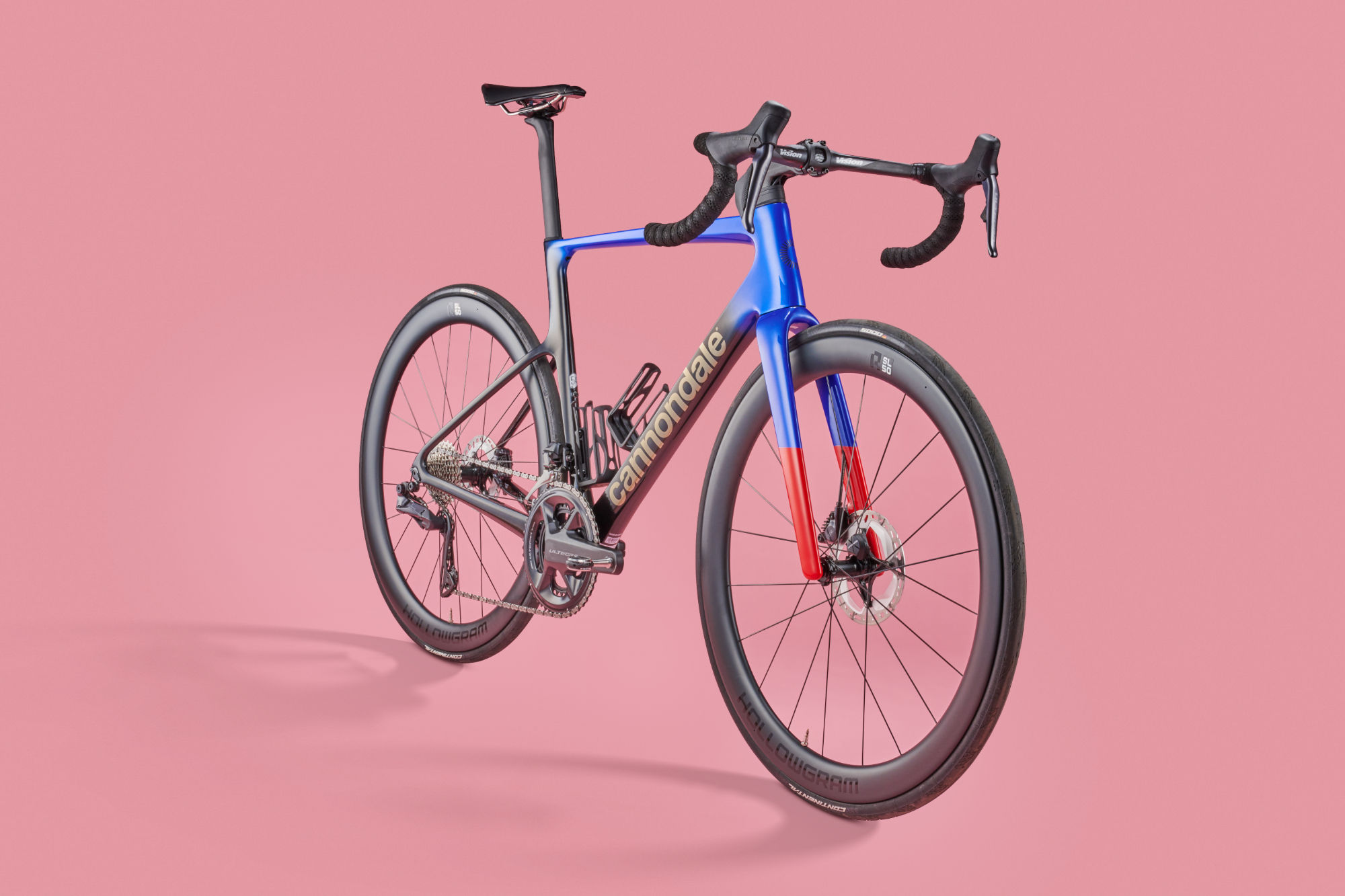
The Cannondale SuperSix Evo received a slew of aero updates in its 2019 iteration. The latest update, unveiled in just March of this year, has been more evolution than revolution – but still packs aero tweaks to the tune of 11w saved over the previous version. Again, like the BMC Teammachine, this is a climbing bike which bears a striking similarity to the aero models of Giant, Wilier and Colnago.
Personally, I love a lightweight frame matched with deep-section wheels – and that’s exactly what the SuperSix Evo provides. At a claimed 770g in a painted 56cm frame, it comes in as the lightest on test – and those 50mm deep HollowGram wheels, although not the lightest for their depth, match most of the hoops here millilitre for millilitre.
The result is a bike that is lightning fast to accelerate and holds its speed well. It’s particularly well suited to surprise attacks and a spot of UK Strava hunting, where momentum into the brutally steep (but relatively short) climbs is a key factor for success.
It’s the climbs where the SuperSix Evo really shines. Not only is it whisper light, the geometry feels particularly well suited for climbing out the saddle and the resultant shifting weight distribution. Bombing down the other side, it’s easy to push the limits that bit further, with the bike feeling poised, but controlled. It’s a worthy winner of our best climber’s bike award. But while impressively fast on the flat for a climber’s bike, sounding out the vibrations better than others, it is neither as fast, nor as comfortable as the Cervélo S5, although the SuperSix does steal the march on the climbs.
In terms of the price, the top spec of the SuperSix Evo is up there with the highest, although mercifully still below the £15,000 mark. Perhaps surprisingly, the entry-level model is the fourth cheapest on test – which you might not have expected from Cannondale.
- Price range: $4,500 - $15,000 / £4,000 - £12,500
- Model tested: $8,300 / £8,250
- Weight: 7.3kg
- Rim depth (wheels): 50mm HollowGram R-SL
- Internal rim width: 21mm
- Tyre width (model): GP5000 25mm
- Groupset: Shimano Ultegra
- Saddle: Prologo Dimension TiRox NDR, Ti
Giant Propel Advanced Pro 1

The Giant Propel has long been one of the best aero bikes on the market, particularly when considering the performance and spec you get for the price – and this latest iteration has brought a whole host of great improvements to the platform. It misses out on the title of ‘grouptest winner’, but is a worthy victor in our ‘best value’ category.
The first point to make relates to the scale of the overhaul. Previously, the Propel had a long-established position in the pantheon of deep-tubed aero bikes.
The Taiwanese giant has now pivoted to a much slimmer design, one which ascribes a greater priority to both weight and comfort. But aerodynamics haven’t been left by the wayside – Giant claims that even with its slimmer tube shapes, the new Propel is 6.2 watts faster at 40kph than the previous model.
And it does certainly feel fast. Tucked up on the flatter sections of the testing loop, I was really able to motor along, holding my speed without any issues.
With slimmer tubes and shallower wheels (still 50mm deep on the Giant), I didn’t get caught by the crosswinds across the open fields the same as I was on the Canyon. Also, with a combination of tyres mounted on wider rims and what felt like much better vibration from the front end of the bike, I wasn’t as shaken as on the Aeroad and felt smoother and faster on the Propel. Improvements all round.
One of the best parts, for me, is that Giant has brought the Propel closer in line with its TCR climbing bike. Amongst other things, the wheelbase has been shortened and the trail has been increased. The result of this is a bike that feels playful but controlled. One that doesn’t leave you feeling like you’re dancing on the edge of a razor but still responds lightning-fast to changes in direction.
Whilst I do have a soft spot for aero climbing bikes, that’s not an unreflective preference. If an aero bike picks up some elements of a climbing platform, honing its handling and dropping the weight, that’s a clear win for me. In its top spec lay-up Giant has managed to get the Propel down to a claimed 845g, the second lightest of the aero bikes on test, just behind the Colnago V4RS.
So why hasn’t the Giant Propel won the test? Well, great though the handling, comfort and straight-line speed are, the Cervélo S5 does stand above the Propel in all these areas. Where the Giant really excels is in all of these qualities, balanced against its price.
The top model spec is actually only the second cheapest on test, the Canyon Aeroad impressively manages to steal a march there, with the German outfit limboing under five figures and Giant coming in at £11,999.
It’s at entry level where the Propel really stands out, with the cheapest starting price of all the models on test by about 30% – it’s the only one to come in under £3,000. If you’re interested in reaping the improvements in handling and Giant’s latest aero-modelling (but are on a tighter budget) this is your best option by far. Giant has managed to combine an excellent bike with that exceptional price.
- Price range: $6,000 - $12,500 / £2,999 - £11,999
- Model tested: $6,000 / £5,499
- Weight: 8.46kg
- Rim depth (wheels): 50mm Giant SLR 1
- Internal rim width: 22.4mm
- Tyre width (model): 25mm Giant Gavia Course 1
- Groupset: SRAM Rival AXS
- Saddle: Giant Fleet SL
The awards
Overall winner - Cervélo S5
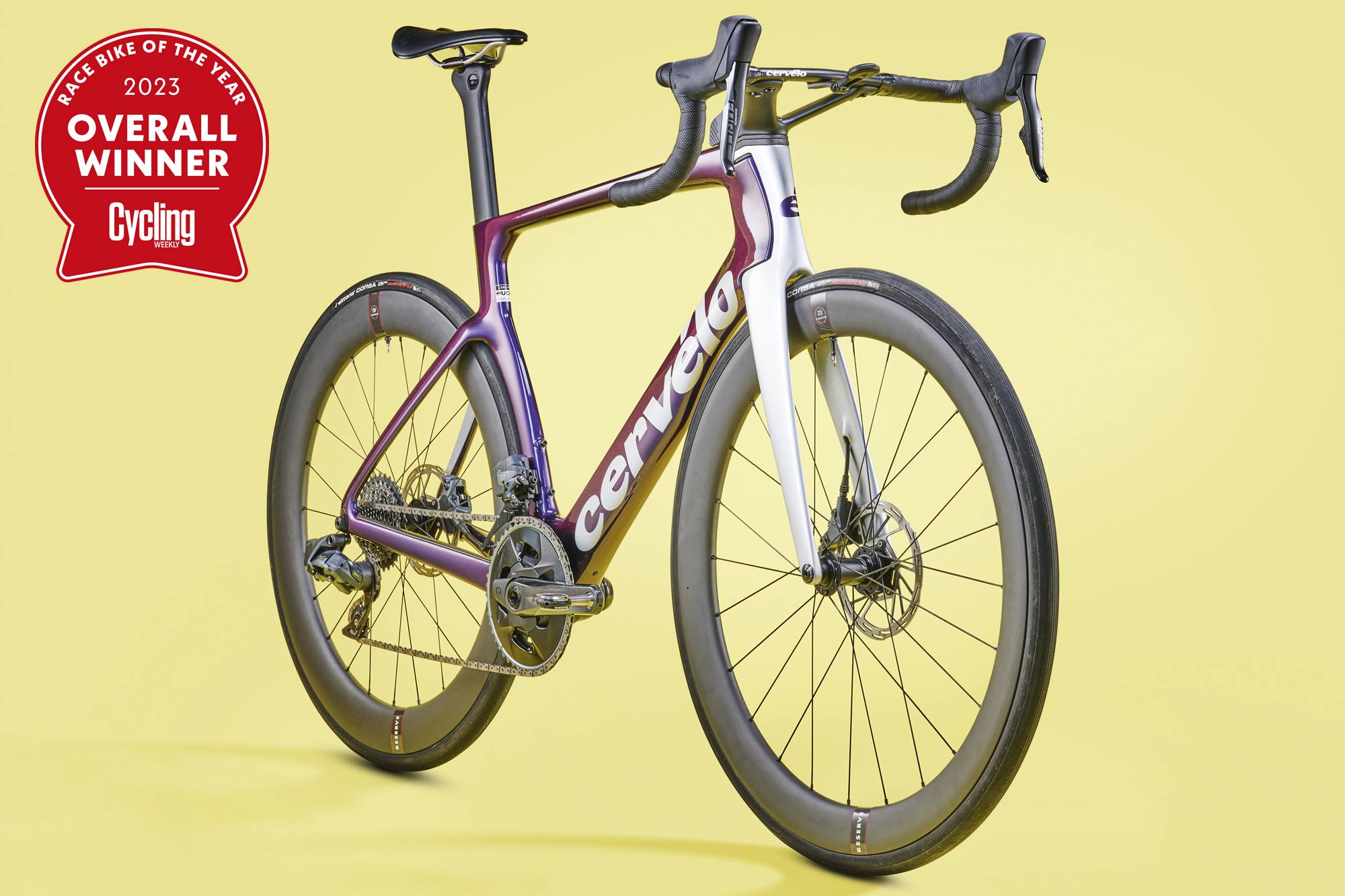
New generations and iterations have been coming thick and fast over the last 12 months; the Cervélo S5 is yet another model which received an update last year - including a readymade palmarès.
The S5 wore both yellow and green during the 2022 Tour de France, under Jonas Vingegaard and Wout van Aert, respectively. It was also piloted to wins in both the women’s and the men’s 2021 Ghent–Wevelgem by Marianne Vos and van Aert.
With its combination of straight-line speed, cornering prowess and magic-carpet ride quality, the S5 is also a worthy winner of Cycling Weekly’s 2023 Race Bike of the Year award. Although that’s not to say that the choice was straightforward and obvious… In a straight-up battle of the specsheets, the S5 wouldn’t fare nearly as well. But if you’ve come this far, you’re clearly not afraid of a delve into all the nerdy details – so let’s jump straight in and tease apart exactly how the S5 manages to be greater than the sum of its specs.
Aero isn’t everything
First, let’s address the nuance of why the S5 clinches the title of Race Bike of the Year, but not Best Aero Bike - and, conversely, why the Trek Madone earnt the latter but missed out on the overall top-spot. The first part is quite easy to explain. Although aero is a hugely important factor in the winning potential of a race bike, there are also other considerations which must be taken into account. Handling is a key area – having confidence, control and more ‘elastic limits when railing round the corners is itself a major boon to your speed. Equally, just how well a bike minimises vertical deflection has big consequences for both the rolling resistance and comfort.
The Trek Madone excelled particularly in terms of its aero performance, helped in large part by its quite unique handlebar design and sizing. However, the Madone is let down by its handling. As mentioned, personal preference is a factor here, but the Madone is notably more twitchy than all the other models on test. Its comfort, although certainly not jarring, isn’t the best either.
Those are two areas where the Cervélo S5 shines particularly, but let’s finish our discussion of the aero first. Although the S5 isn’t the hands-down most windcheating model on test, it still rides very fast. The updated tubes from the previous iteration likely play a part (the new S5 is claimed to be seven watts faster), but also the comfy shaping of the bars makes it easy to hold the ‘aero-hoods’ position for long durations – albeit with a 42cm centre-to-centre width, rather than the 39cm of the Madone.
But it’s the handling which really sets the Cervélo S5 apart. It’s quick to respond to a change of line but manages to remain far from being twitchy. The result is that it’s just so easy to really rail the corners. You can be confident that you won’t accidentally exceed your limits, that you can get so much closer to them – and that really shows.
Though the balance of the geometry is predominantly responsible for the S5’s balanced handling, this particular wheel/tyre combo plays a sizable role, too. To some extent, the bikes shouldn’t be judged too harshly on their wheels, as this is something which can be changed quite easily. That said, we are comparing fully built bikes here, rather than just framesets, so I think credit should absolutely still go to where it is due.
The Reserve 52|63 wheels have a wide internal rim width, coming in at 25mm up front and 24mm out back. This plumps the 28mm Vittoria Corsa tyres out to over 31mm – but it also makes the shoulders of the tyres much more gently sloping than any of the other models on test.
Quality ride
The result is that not only do you get a larger footprint providing more grip, you also get a much more progressive feeling when loading them up and banking over heavily in tighter corners. It also means that the ride quality of the S5 is actually better than all others on test – even those models with fancy flexing seatposts. Speed over coarser sections of tarmac is palpably faster, too, as the bumps are just absorbed rather than pinging the bike about.
There’s no getting away from the weight of the S5. At 8.22kg for this SRAM Force build, the S5 is heavier than comparable models. The Scott Foil (albeit with SR AM Red) came in at 7.28kg. Despite this, the S5 doesn’t feel ‘heavy’ to ride and, in most cases, gains in aero and rolling resistance will help you more than solely focusing on the weight.
The S5’s gains across the board – it’s handling, comfort and aerodynamics – more than make up for the extra mass. As the complete package, the Cervélo S5 deservedly wins our 2023 Race Bike of the Year award.
- Price range: $9,000 - $13,000 / £9,200 - £12,500
- Model tested: $9,000 / £9,200
- Weight: 8.2kg
- Rim depth (wheels): 52/63 Reserve
- Internal rim width: 24.4mm
- Tyre width (model): 28mm Vittoria Corsa TLR G
- Groupset: SRAM Force AXS
- Saddle: Selle Italia Novus Boost Evo SuperFLow Ti
Best aero bike - Trek Madone
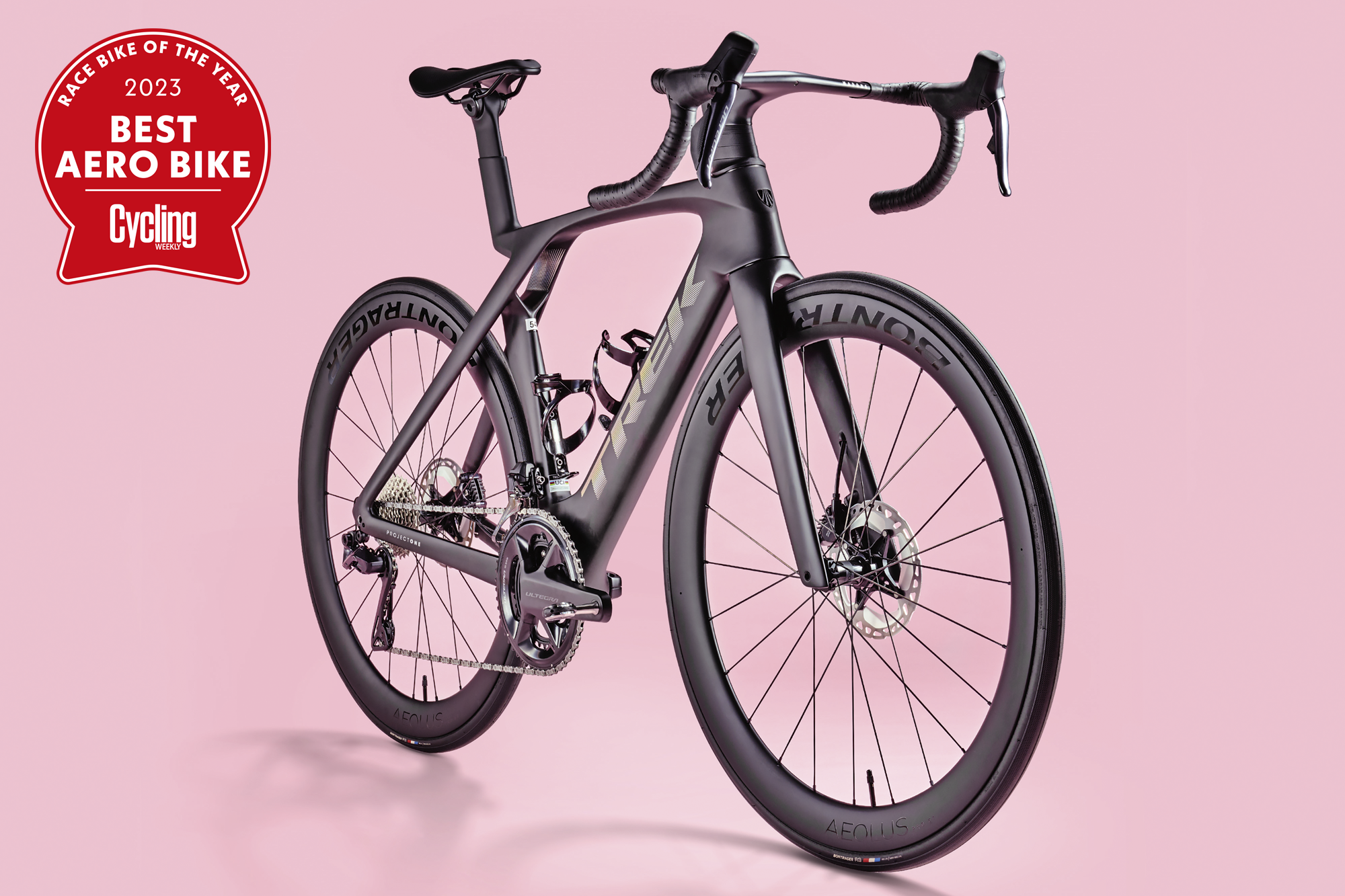
In aerodynamics, the rider and bike act as a system, with the former contributing 80 per cent of the aerodynamic drag and the latter just 20 per cent. You’re looking at a fraction of that fraction when considering frames, wheels, handlebars etc. With that in mind, the question is not so much what CdA your bike has, but what CdA your bike can give you…
And the bike that best ticks this box is the Trek Madone. The handlebars – the narrowest on test – are a really excellent design, with that curve with its two distinct bends which supports your wrists much better than more traditional bars and enables you to stay lower for longer.
Typically, a size 54cm frame will be specced with 42cm bars and the Madone’s bars are, nominally, 42cm – but that’s just at the drops. Up at the hoods, the bars narrow to just 39cm, helping to slot you into a more aero position without compromising your stance width when descending.
Not only that, but the bar width varies greatly with the frame size. In the smallest 47cm model, the handlebars measure just 35cm at the hoods – there are many handlebar models which don’t even dip below 38cm, so it’s great to see smaller riders being accommodated for.
By the way, the smallest three sizes of the Trek Madone come with a wider saddle than the largest frame sizes, as disproportionately more women ride those sizes and the majority of women are better suited to a wider saddle. Trek doesn’t make a big deal about this, it’s just quietly getting on with what’s right and makes sense – you’ll only notice if digging through the spec sheets.
Dream bike - Colnago V4RS
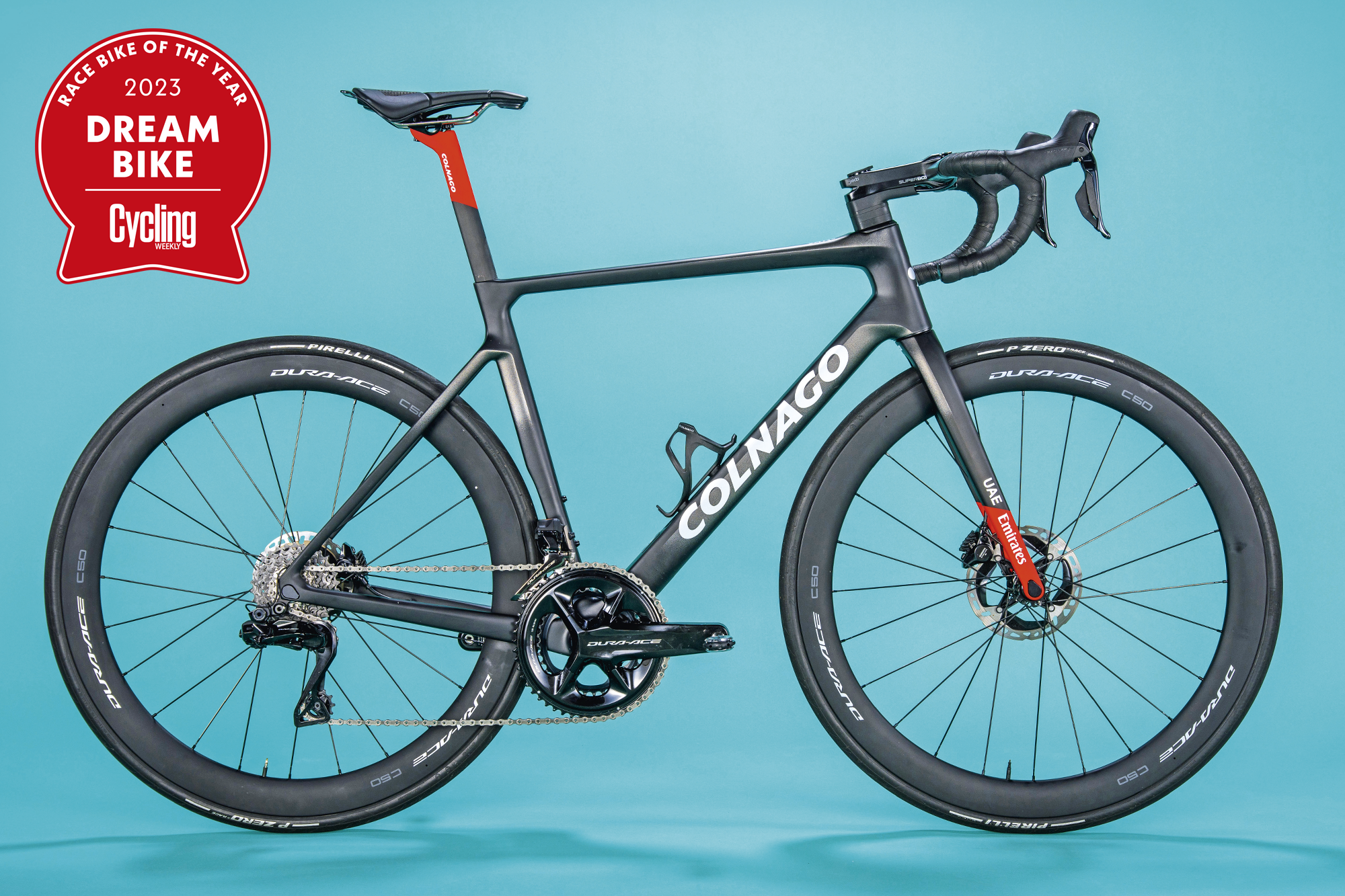
Although we always approach our testing as analytically as we can, some space must be left to consider the more intangible elements of the bikes – which model lights the strongest flame of desire in the reviewer?
What we’re looking for here is a thrilling – not necessarily the fastest – ride and an elision of heritage and cutting-edge progress: a modern classic.
It wasn’t an obvious choice. Wilier wins in the heritage stakes but both Cannondale and Colnago – founded in 1971 and 1968, respectively – embody their own traditions.
All these brands provide the warm glow of a history we’re looking for, but the Colnago V4RS clinches it with its aggressive yet composed ride feel. It’s got an urgency which goads you into attacking on the hills and pushing on the flats.
Plus Colnago does a good job of releasing limited-edition, high-spec versions of this bike, so if money really is no object, you can own a one-off bike that will not only look like a work of art, but ride as well as anything in the pro peloton.
Best climbing bike - Cannondale SuperSix Evo Hi Mod 2
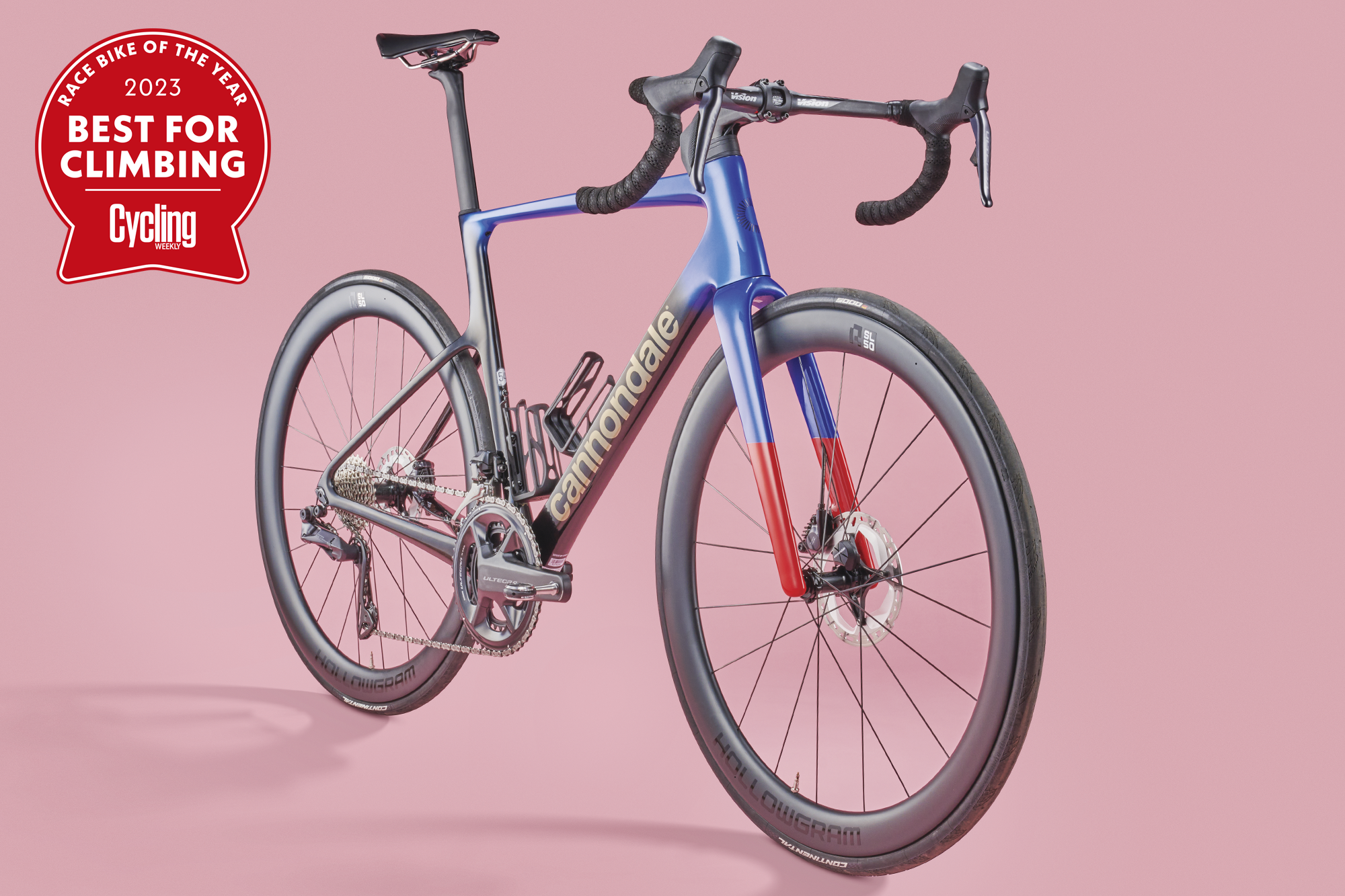
In the pro peloton, where so many aero bikes can be built up to the UCI weight limit, it’s a fair question whether climbing bikes have much of a place any more.
But for those of us not governed by the vicissitudes of the UCI, there are still good reasons why climbing bikes still have a place. The first, and most obvious, is that without a limit, you can reap the benefits of lighter frames and components.
Even if you don’t have the inclination (or the funds) to go full weight-weenie, climbing bikes tend to be lighter for a given price and spec. You can get a better balance of speed and weight at a better price with a climbing bike.
Also, climbing bikes tend to be a bit more comfortable (largely thanks to thinner tubes) and have a more ‘inspiring’ geometry than the best aero bikes.
And that essentially sums up what we’re looking for in the best climbing bike – a low weight, a snappy geometry, comfort, but also optimisations for speed.
After all, so many British climbs are best tackled with a bit of momentum, and many of the most beautiful European mountains have quite shallow gradients thanks to their profusion of hairpin bends – meaning that, with the resultant higher speeds, aero has more importance. Of all the models here, it was the Cannondale SuperSix Evo which hit this brief the best.
Best value - Giant Propel
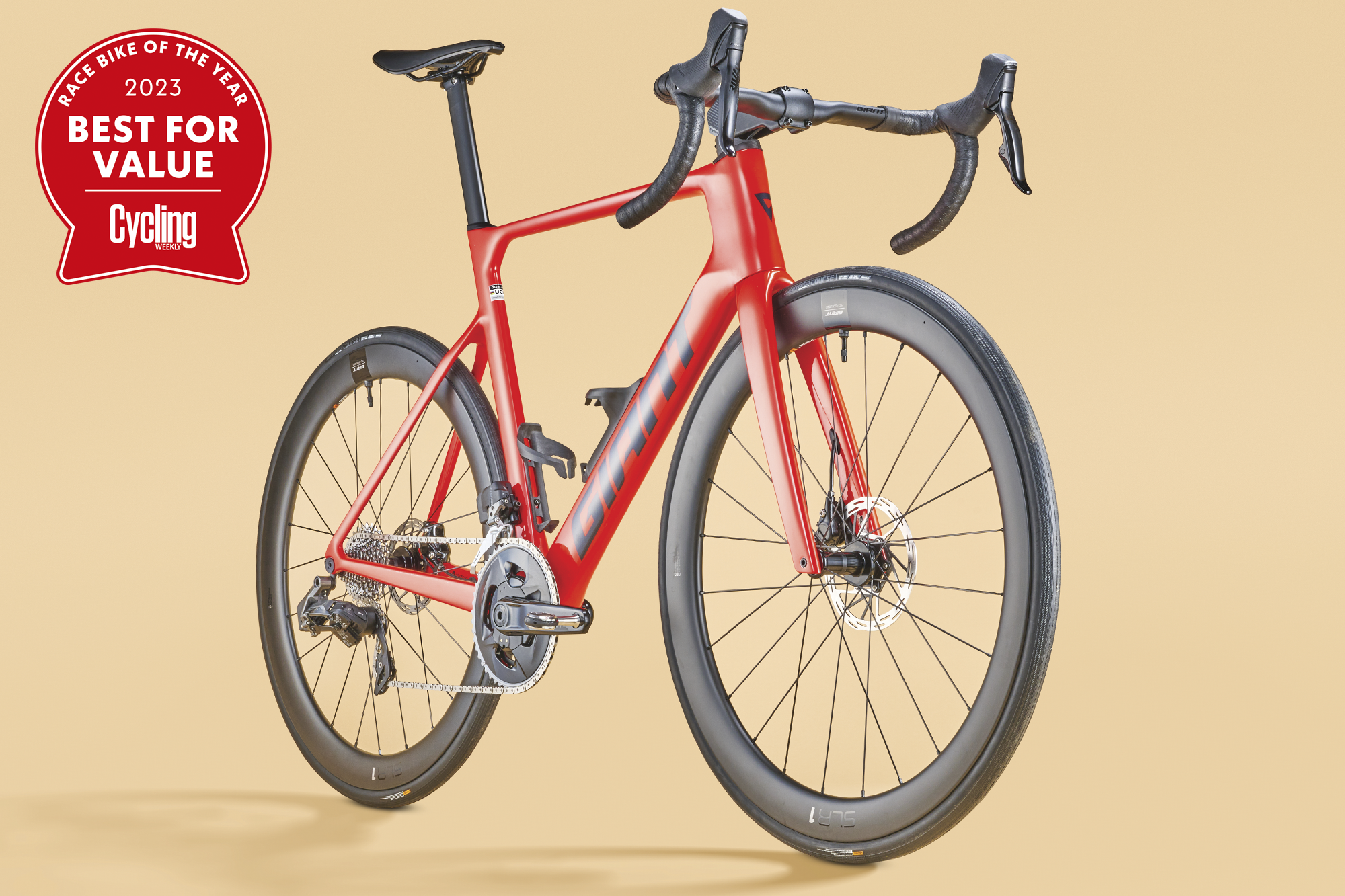
To go into a little more detail on what makes the Giant Propel such excellent value for money, part of this is down to Giant choosing to spec the frameset with more affordable components.
This is precluded by some other frame manufacturers – for instance, the Cervélo S5 isn’t compatible with mechanical groupsets. That might allow for minute performance gains, but it does feed into cycling becoming an ever more exclusive (and expensive) sport.
The Giant Propel (and the BMC Teammachine) are the only models on test which are actually specced with Shimano 105 11-speed mechanical groupsets. The Canyon Aeroad (next cheapest) only goes as low as 11-speed mechanical Ultegra and the Cannondale SuperSix (fourth cheapest entry level option) begins with 12-speed Di2 Shimano 105.
Functionally, Shimano 105 is a truly excellent groupset – I can tell you now that if you’re struggling to make the step up to a second-cat racing licence, the slight weight savings of Ultegra, motor powered derailleurs, or an extra sprocket aren’t really going to make the difference. You’d be much better off saving that money and investing that into a better bike fit – which might include a new saddle, stem, handlebars and crankset with shorter cranks. After that, it’s your tyres and then your wheels that you should be upgrading.
The savings that can be made and then reinvested by going for a 105 groupset are huge, so hats off to Giant for offering that.
If you are set on electronic gears, though, Giant is edged out by that Cannondale SuperSix Evo, which comes in at £4,000 compared to £4,499 – but you get deep-section carbon wheels with the Giant rather than shallow-section alloy hoops on the ‘dale, so in terms of what you’re getting for your money, the Giant remains the better deal.
How we test
We split our testing protocol into two halves: (1) back-to-back testing on a set loop and (2) the long-term testing all of the bikes we review are subject to. Through this, we were able to rack up a cumulative nine months of testing, as well as gaining insights through direct comparison by riding on the same day, in the same conditions and on the same roads.
Our tech features editor, Stefan Abram, took the honour of riding the bikes back-to-back on a painstakingly scoped loop in the North Wessex Downs in order to ensure a little bit of everything was taken in: flat and straight riding in the lanes, a string of tight corners, a stiff climb and a descent – which, all taken together, established the comparative ride quality, handling, perceived speed and climbing prowess.
But there is no substitute for simply racking up miles on a greater variety of roads, terrains and conditions. Here, Hannah, Simon and Anna put in the grunt work and all of their individual reviews will be published in subsequent magazine issues and online throughout the remainder of this year.
WorldTour bikes are eye wateringly expensive, so although we have reviewed these models in their swanky specs, we’ve also detailed the entry point of each bike’s range and, as you’ll see, there’s quite a variance.
And so, equipped with the detailed takes from the wider team and Stefan’s back-to-back testing – and after many, many hours of in-depth discussions – we’ve arrived at our conclusion of which model is the worthy winner of Race Bike of the Year and each of the individual categories.
Gender difference and testers
Continuing research and analysis has seen the consensus shift on the relevancy of women-specific geometry/bikes.
Although there are statistical differences between the ‘average’ man and woman, the reality is that we all exist somewhere on the bell curve: some women have proportions closer to that of the ‘average’ man and some men have proportions closer to that of the ‘average’ woman.
Bikes should never have been labelled for ‘men’ or ‘women’ in the first place, but rather for the body shapes they were trying to accommodate. Producing bikes in smaller frame sizes is important. Giving the option for finishing kit which is more likely to suit a female rider is important. Offering two bikes with different geometries for a man and a woman who both ride a 54cm frame isn’t so much – as is evidenced by the fact that all of the women’s WorldTour teams ride unisex bikes.
With that in mind, we had an even split between male and female testers for our Race Bike of the Year testing.
Hannah Bussey: With the Peak District lying on her doorstep, Hannah’s stamping ground isn’t short of brutally steep, and sustained, climbs – a fitting anvil for testing the lightest bikes.
Simon Smythe: The hedgerowed lanes of Sussex and Surrey don’t have the elevation differentials of craggier climes, but Simon’s home roads have been a faithful testing ground for many, many bikes.
Anna Abram: After departing the South East for South Wales, bigger hills, smaller roads and sterner tests for weather-sealing have all been on the menu. But those fast and flat valley roads still give plenty of scope for quickly racking up the miles.
Stefan Abram: Stefan’s home roads in Wales likewise provide a huge range of riding. But this has been supplemented by back-to-back testing in the North Wessex Downs, near to Cycling Weekly’s Reading offices.
This full version of this article was published in the 25 May 2023 print edition of Cycling Weekly magazine. Subscribe online and get the magazine delivered to your door every week.
The latest race content, interviews, features, reviews and expert buying guides, direct to your inbox!

After winning the 2019 National Single-Speed Cross-Country Mountain Biking Championships and claiming the plushie unicorn (true story), Stefan swapped the flat-bars for drop-bars and has never looked back.
Since then, he’s earnt his 2ⁿᵈ cat racing licence in his first season racing as a third, completed the South Downs Double in under 20 hours and Everested in under 12.
But his favourite rides are multiday bikepacking trips, with all the huge amount of cycling tech and long days spent exploring new roads and trails - as well as histories and cultures. Most recently, he’s spent two weeks riding from Budapest into the mountains of Slovakia.
Height: 177cm
Weight: 67–69kg